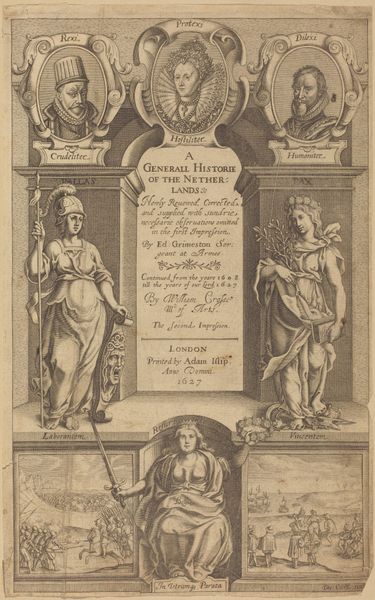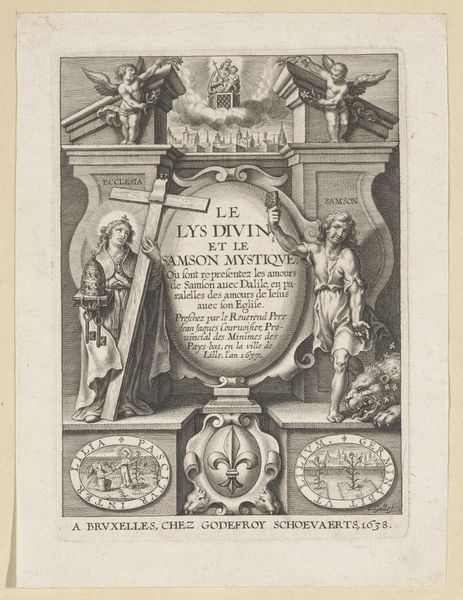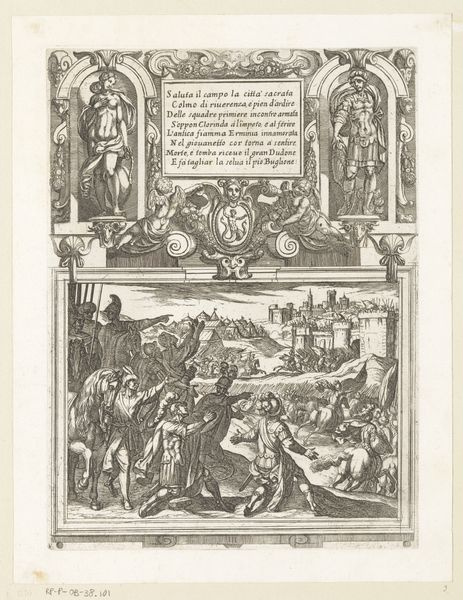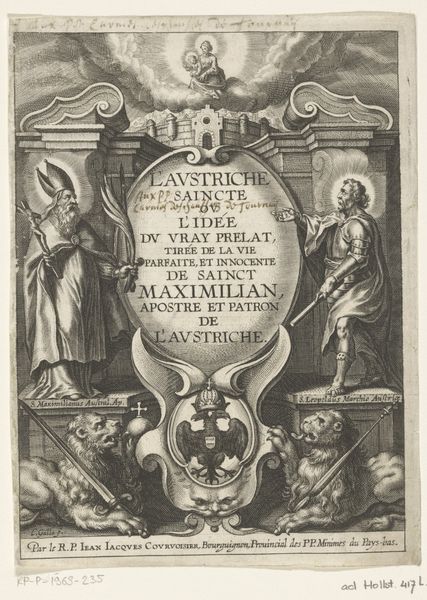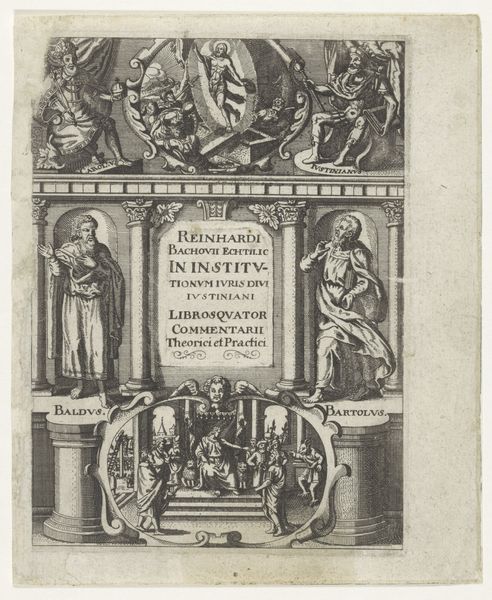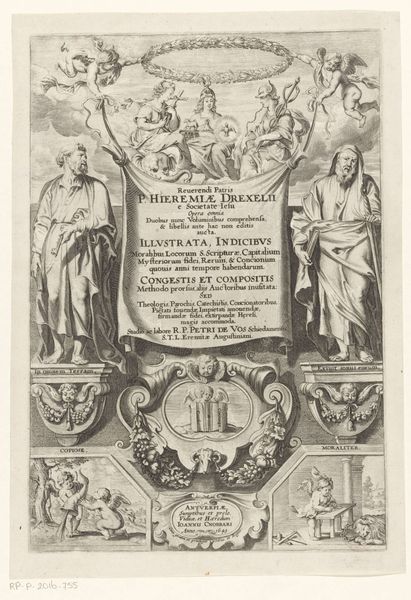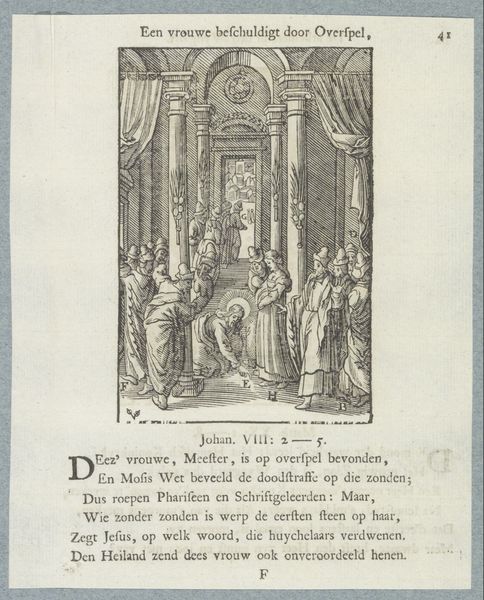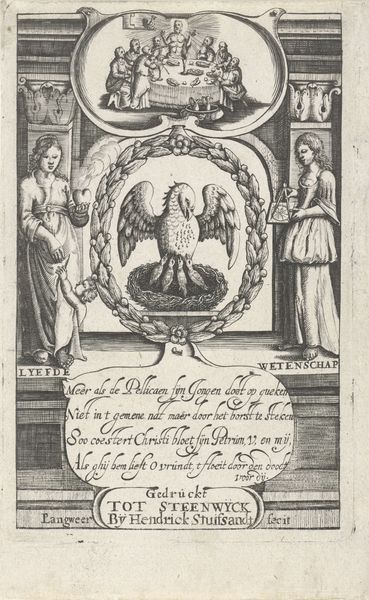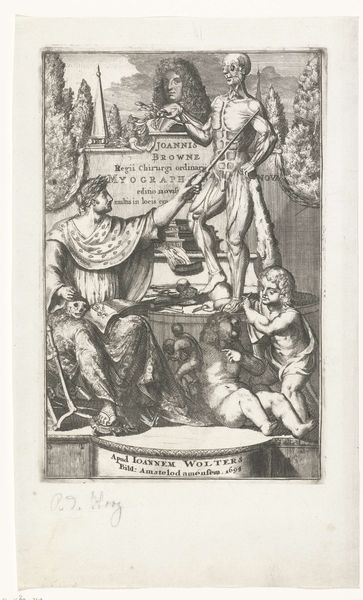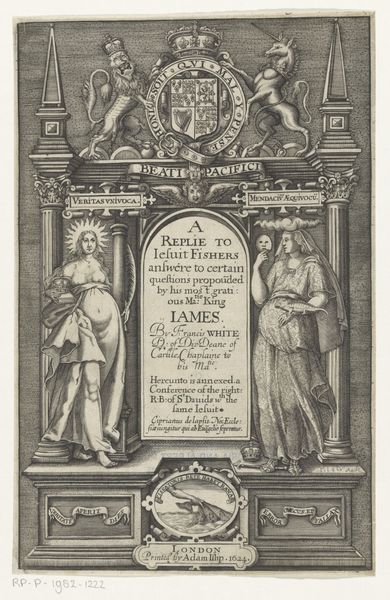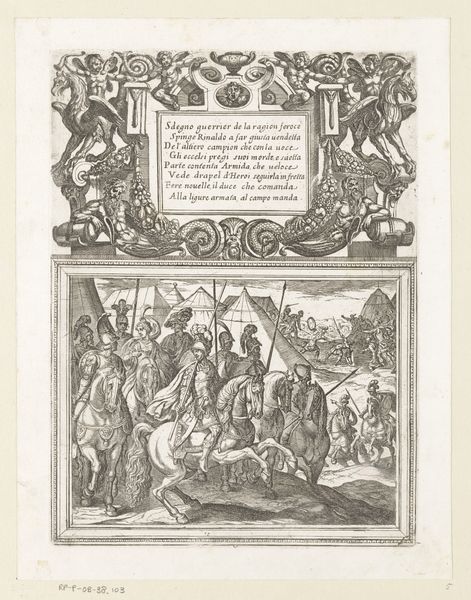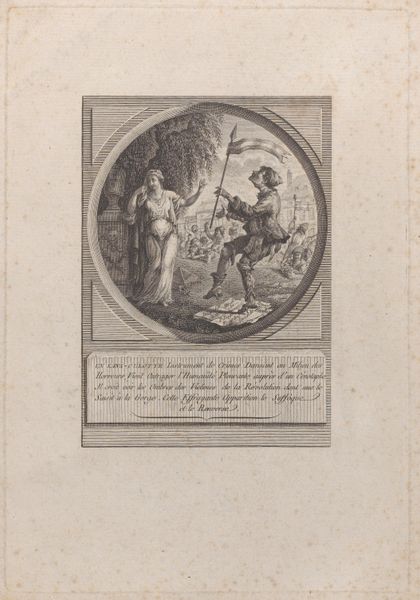
print, engraving
#
allegory
#
baroque
# print
#
history-painting
#
engraving
Dimensions: height 165 mm, width 119 mm
Copyright: Rijks Museum: Open Domain
This print, made by Jacob van Meurs around 1642, allegorizes the annotations of Franciscus Heerman. But what does this elaborate visual language tell us about Dutch society at the time? The image creates meaning through its use of Christian and classical symbols. Figures such as Father Time and Fame are visual codes representing time and reputation. Meanwhile, the cross and the book represent Christian values and knowledge. This combination of cultural references speaks to the social and intellectual climate in the Netherlands, which was shaped by both religious and classical traditions. Prints like these were important cultural objects during the Dutch Golden Age. They were affordable and accessible to a wide audience. To understand the social conditions that shaped it, we can look at the history of printing and bookmaking in the Netherlands. Research into the lives and careers of its artists, patrons, and printers could reveal much about the making and meaning of art in its time.
Comments
No comments
Be the first to comment and join the conversation on the ultimate creative platform.
